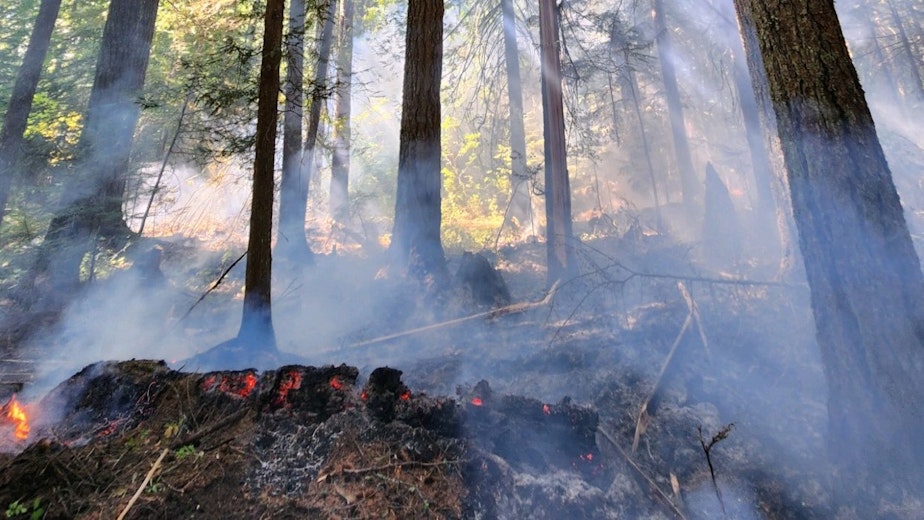How to keep carbon in Washington's forests

When forests burn, there is a specific type of environmental harm that might not immediately come to mind: Carbon stored in the trees is released into the atmosphere.
A new study has found locations in Washington state where protecting trees could have the biggest impact on carbon storage and community safety.
“When fire burns through an area, it releases a large part of that carbon by burning the tree up," said Michael Case, a forest ecologist with the Nature Conservancy.
The Nature Conservancy, the University of Montana, and the U.S. Forest Service found forests in Central and Eastern Washington, California, and Arizona are hot spots — they pose the biggest risk of burning and leaking the most carbon into the atmosphere.
Case says prioritizing thinning and burning stands within these hotspots could lower wildfire risks, and help with carbon storage.
This comes after the federal government earmarked billions of dollars for reducing wildfire risks, forest managers are prioritizing what to address first.
